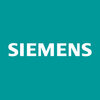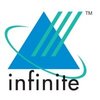Top 250 Networking Interview Questions and Answers
Updated 12 Jul 2025

Asked in Capgemini

Q. What are the seven layers of networking?
The seven layers of networking refer to the OSI model which defines how data is transmitted over a network.
The seven layers are: Physical, Data Link, Network, Transport, Session, Presentation, and Application.
Each layer has a specific function and co...read more
Asked in Market Mirror Research Solutions

Q. If a computer's WiFi is not working, what are the first troubleshooting steps you would take?
The first steps to troubleshoot a computer wifi issue
Check if the wifi is enabled on the computer
Restart the computer and the wifi router
Ensure the computer is within range of the wifi signal
Check if other devices can connect to the wifi network
Updat...read more

Asked in Sify Technologies

Q. Which layers are at the heart of the OSI model?
The layers that call to the heart of OSI are the Transport layer and the Application layer.
The Transport layer is responsible for the end-to-end delivery of data and ensures reliable communication between hosts.
The Application layer provides services...read more

Asked in Sysnet Global Technologies

Q. What is the iLO IP address?
iLO IP stands for Integrated Lights-Out IP. It is a management processor embedded in HP ProLiant servers for remote server management.
iLO IP is used to remotely manage and monitor HP ProLiant servers.
It provides features like power control, remote co...read more

Asked in Thoughtsol Infotech

Q. What is DHCP and what is the DHCP process?
DHCP stands for Dynamic Host Configuration Protocol. It is a network protocol that enables devices to obtain IP addresses automatically.
DHCP is used to assign IP addresses to devices on a network.
The DHCP process involves four steps: discovery, offer...read more
Asked in Teledgers Technology

Q. Explain the concept of DNS.
DNS stands for Domain Name System. It is a system that translates domain names into IP addresses.
DNS is like a phonebook for the internet
It helps to locate websites by translating domain names into IP addresses
DNS servers store information about doma...read more

Asked in The Compu Seconds

Q. How can we allow incoming traffic from a particular device to access DVR service between two subnets?
To allow incoming traffic of a particular device to access DVR service between two subnets, we can use port forwarding and firewall rules.
Configure port forwarding on the router to redirect traffic from a specific port to the DVR's IP address
Create f...read more

Asked in IBM

Q. What is the administrative distance value of BGP, and what are the BGP states?
BGP (Border Gateway Protocol) is a routing protocol used in internet networks. It provides scalability, redundancy, and policy control.
BGP is used to exchange routing information between different autonomous systems (AS)
It allows for efficient routin...read more

Asked in Siemens

Q. What VPN port is used for UDP?
The VPN port used for UDP is typically 500.
The VPN port used for UDP is usually port 500.
UDP is a protocol that allows for faster transmission of data but does not guarantee delivery or order of packets.
Port 500 is commonly used for IPsec VPNs, which...read more

Asked in TCS

Q. When two or more computers or communicating devices are in a room, on a floor in a building or in a campus, if connected is said to be connected on a LAN.
LAN stands for Local Area Network, which connects two or more devices in a limited area.
LAN is a type of network that connects devices within a limited area such as a room, floor, or building.
It allows devices to communicate with each other and share...read more
Networking Jobs




Asked in Thoughtsol Infotech

Q. What are the latest routers and switches used in the market?
The latest router and switch used in the market are Cisco Catalyst 9000 Series switches and Cisco ASR 9000 Series routers.
Cisco Catalyst 9000 Series switches are known for their advanced security features and programmability.
They offer high performan...read more

Asked in iOPEX Technologies

Q. What is TCP or a TCP Header?
TCP (Transmission Control Protocol) is a reliable, connection-oriented protocol that provides error checking and flow control.
TCP is responsible for breaking data into packets and reassembling them at the destination
TCP header contains source and des...read more

Asked in Mapps IT Services

Q. What is the FSMO role in Active Directory?
FSMO (Flexible Single Master Operations) roles are specialized domain controllers that manage specific tasks in Active Directory.
There are 5 FSMO roles: Schema Master, Domain Naming Master, RID Master, PDC Emulator, and Infrastructure Master.
Schema M...read more

Asked in TCS

Q. Tell me something about OSPF layers.
OSPF has three layers: backbone, area, and interface.
Backbone layer connects all areas and is responsible for routing between them.
Area layer groups networks together and reduces the amount of routing information exchanged.
Interface layer connects ro...read more

Asked in Sify Technologies

Q. Which protocols work with application layers?
Protocols that work with Application layers include HTTP, FTP, SMTP, DNS, and SNMP.
HTTP (Hypertext Transfer Protocol) is used for web browsing and communication between web servers and clients.
FTP (File Transfer Protocol) is used for transferring fil...read more

Asked in Infosys

Q. How does F5 load balance traffic?
F5 load balances traffic by distributing it across multiple servers to optimize performance and ensure high availability.
F5 uses a variety of load balancing algorithms such as round robin, least connections, and weighted round robin.
It distributes in...read more

Asked in Luxoft

Q. Why is HTTP stateless?
HTTP is stateless because it does not retain information about previous requests.
HTTP treats each request as an independent transaction without any knowledge of previous requests.
This design simplifies implementation and improves scalability.
State in...read more

Asked in Movate

VLANs are needed to logically segment a network, improve security, optimize network performance, and simplify network management.
VLANs help in isolating network traffic, reducing broadcast domains, and enhancing network security.
They allow for better...read more

Asked in Capgemini

Q. How can two systems communicate in different VLANs over a switch?
Two systems in different VLANs can communicate through a router or layer 3 switch.
A router or layer 3 switch is required to route traffic between VLANs
Each system must have a unique IP address within their respective VLANs
The router or layer 3 switch...read more

Asked in ONPASSIVE

Q. What is routing, and what is its syntax?
Routing is the process of navigating between different components or pages in an Angular application.
Routing is used to create single-page applications (SPAs) where the content is dynamically loaded without refreshing the entire page.
In Angular, rout...read more

Asked in Sify Technologies

Q. Which protocol has the lowest Administrative Distance (AD) value?
The protocol with the lowest AD value is OSPF (Open Shortest Path First).
AD (Administrative Distance) is a value used by routers to determine the best path for forwarding packets.
Lower AD value indicates a more preferred route.
OSPF has an AD value of...read more

Asked in Orange Business

Q. What are the basic steps of network troubleshooting?
The basic steps of network troubleshooting involve identifying the problem, gathering information, isolating the issue, testing solutions, and implementing fixes.
Identify the problem by gathering information from the user or monitoring tools
Isolate t...read more

Asked in Prologic Web Solutions

Q. What is the difference between LAN and WiFi?
LAN is a wired network that connects devices within a limited area, while WIFI is a wireless network that allows devices to connect without cables.
LAN uses Ethernet cables to connect devices, while WIFI uses radio waves.
LAN is faster and more secure ...read more

Asked in Wipro and 3 others

Q. What is HTTPS?
HTTPS stands for Hypertext Transfer Protocol Secure. It is a secure version of HTTP that encrypts data sent between a website and a user's browser.
HTTPS uses SSL/TLS encryption to protect data
It ensures that the website being accessed is authentic
It ...read more

Asked in S10 Healthcare Solutions

Q. What is an IP address, how does it work, and can you explain it?
IP address is a unique numerical identifier assigned to devices connected to a network.
IP stands for Internet Protocol
It consists of a series of numbers separated by dots
It is used to identify devices on a network and facilitate communication
There ar...read more

Asked in IBM

Q. How many hosts will be in a /29 subnet?
A /29 subnet has 6 usable host addresses.
A /29 subnet has a subnet mask of 255.255.255.248.
The subnet mask leaves 3 bits for host addresses.
2^3 = 8, but 2 addresses are reserved for network and broadcast.
Therefore, a /29 subnet has 6 usable host addr...read more

Asked in Tech Mahindra

Q. What do you mean by TCP/IP?
TCP/IP stands for Transmission Control Protocol/Internet Protocol. It is a set of protocols that allows computers to communicate over the internet.
TCP/IP is a suite of communication protocols used for transmitting data over networks.
It provides relia...read more

Asked in Verizon

Q. In which scenario do we need UDP?
UDP is used in scenarios where speed is more important than reliability, such as online gaming and video streaming.
UDP is a connectionless protocol that does not guarantee delivery of packets
It is faster than TCP because it does not have to establish...read more

Asked in Microland and 2 others

Q. What do you mean by domain?
A domain is a group of computers and devices on a network that share a common set of rules and procedures.
Domains are used to manage and organize network resources.
A domain is typically controlled by a domain controller.
Users and computers within a d...read more

Asked in Infinite Computer Solutions

Q. Do you have any experience in MPLS/IP?
Yes, I have experience in MPLS/IP.
I have worked with MPLS VPNs to provide secure connectivity between multiple sites.
I have configured MPLS traffic engineering to optimize network performance.
I have experience with MPLS QoS to prioritize traffic and ...read more

Top Interview Questions for Related Skills
Interview Experiences of Popular Companies










Interview Questions of Networking Related Designations



Reviews
Interviews
Salaries
Users











